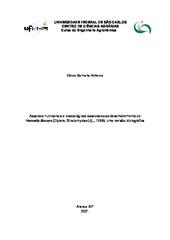Aspectos nutricionais e bioecológicos associados ao desenvolvimento de Hermetia illucens (Diptera: Stratiomyidae) (L., 1758): uma revisão bibliográfica
Resumo
This literature review aimed to point out general and specific bioecological problems associated with the development of Hermetia illucens (L.) (DIPTERA: Stratiomyidae). H. illucens or black soldier fly (BSF) is a polyphagous species, synanthropic and widely distributed around the world. Its larvae have six instars; in optimal conditions, it can reach the 5th instar at intervals of 13 to 18 days, producing a rich quantity of biomass from waste of low commercial value. Constant temperatures between 24 and 33 Cº associated with diets with Protein+Carbohydrate contents (50% Dried Matter), P:C 1:2, humidity of 60 to 90%, small amounts of heavy metals, biological and secondary metabolic contaminants were pointed out, by the consulted literature, as very important factors for the development, commercial viability and biosafety of the final product. In the general criteria of this work, concepts on nutritional ecology, food regulation and objective criteria for the evaluation of diets were compiled. Regarding to specific criteria, abiotic factors and biological characteristics identified in the literature are discussed in the second part of the review with more details, together with some sanitary standards required by the European Union. In general, with the technification of the production chain and constant updating of current norms and legislation, there is an excellent perspective for BSF rearing in the coming years in westernized countries.
Collections
Os arquivos de licença a seguir estão associados a este item:

